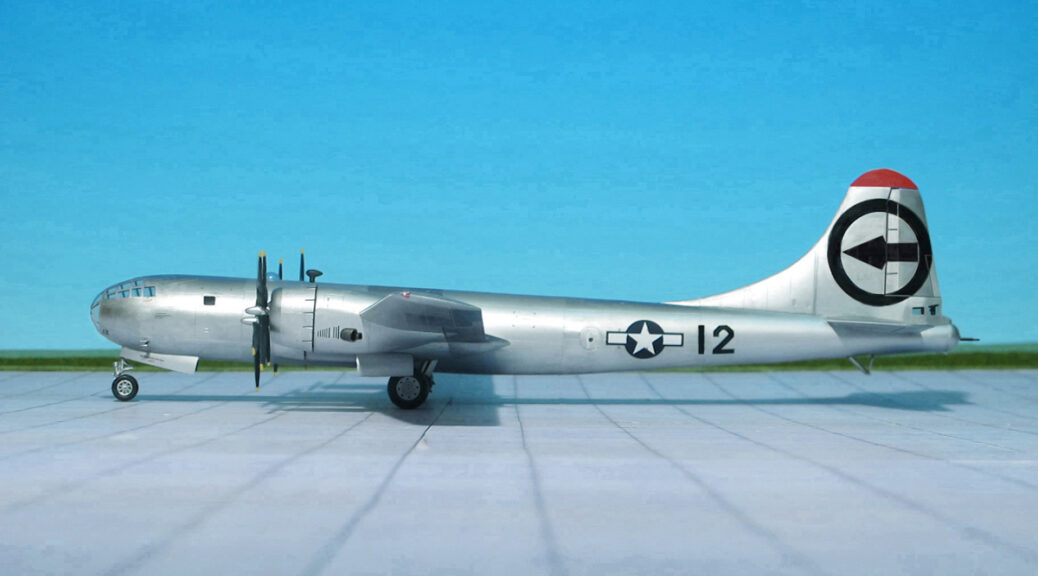COMMENT: The aircraft B-29 Superfortress (Model number B-29-45-MO, Serial number 44-86292, Victor number # 12, (squadron-assigned identification)) – later known as Enola Gay – was built by the Glenn L. Martin Company at its bomber plant in Bellevue, Nebraska. The bomber was one of the first fifteen B-29s built to the “Silverplate” specification— of 65 eventually completed during and after World War II—giving them the primary ability to function as nuclear “weapon delivery” aircraft. These modifications included an extensively modified bomb bay with pneumatic doors and British bomb attachment and release systems, reversible pitch propellers that gave more braking power on landing, improved engines with fuel injection and better cooling, and the removal of protective armor and gun turrets.
The aircraft was personally selected by Colonel Paul W. Tibbets Jr., the commander of the 509th Composite Group, on 9 May 1945, while still on the assembly line. The aircraft was accepted by the United States Army Air Force (USAAF) on 18 May 1945 and assigned to the 393rd Bombardment Squadron, Heavy, 509th Composite Group. The tail marking was a circle outline around an arrowhead pointing forward. The Crew B-9, commanded by Captain Robert A. Lewis, took delivery of the bomber and flew it from Omaha to the 509th base at Wendover Army Air Field, Utah, on 14 June 1945.
Thirteen days later, the aircraft left Wendover for Guam, where it received a bomb-bay modification, and flew to North Field, Tinian, on 6 July. It was initially given the Victor number # 12, but on 1 August, the tail marking of the 509th Composite Group, circle outline around an arrowhead pointing forward, was changed in circle R tail marking of the 6th Bombardment Group, 313th Bomb Wing, as a security measure and had its Victor number changed to # 82 to avoid misidentification with actual 6th Bombardment Group aircraft.
During July, the bomber made eight practice or training flights and flew two missions, on 24 and 26 July, to drop pumpkin bombs on industrial targets at Kobe and Nagoya. Enola Gay was used on 31 July on a rehearsal flight for the actual mission (Ref. 24).






